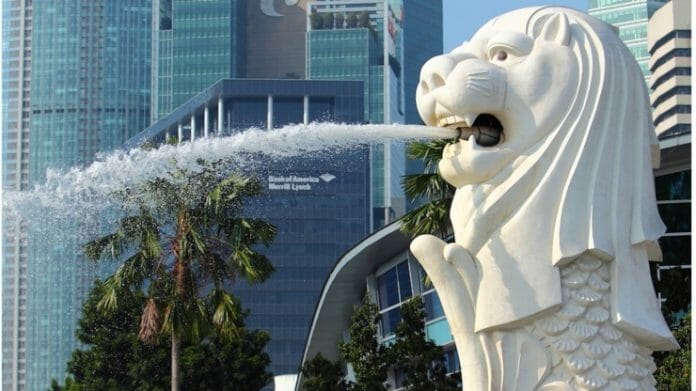Private sector economists have cut their forecast for Singapore’s economic growth this year to 1 percent, down from an earlier projection in June of 1.4 percent.
A slowdown in the external growth environment was cited as the top downside risk, with economists also flagging inflationary pressures and slowing growth in China.
These findings were released on Wednesday (Sep 6) in the Monetary Authority of Singapore’s (MAS) latest survey of professional forecasters. A total of 22 economists and analysts responded to the survey.
The growth estimate of 1 percent in the latest survey falls within the Ministry of Trade and Industry’s (MTI) GDP forecast of between 0.5 and 1.5 percent.
This range was narrowed from a previous forecast of 0.5 to 2.5 percent, with MTI saying in August that it sees a “weak” external demand outlook for the rest of the year.
According to the MAS survey, the manufacturing sector – a key economic indicator – is expected to contract by 4.4 percent this year, a poorer outlook compared to the previous forecast of 1.3 percent contraction.
Singapore’s manufacturing output, which accounts for about one-fifth of the country’s gross domestic product, has been in contraction territory for about a year amid weak global demand, according to the Purchasing Managers’ Index.
But there have been some signs of recovery, with a slower contraction in recent months.
For the third quarter of this year, economists in the MAS survey expect GDP to grow by 1 percent year on year, higher than the 0.5 percent year-on-year expansion in the second quarter.
Private sector economists also expect core inflation to come in at 4.1 percent for the whole of 2023, unchanged from their projection in June.
Core inflation, which excludes accommodation and private transport costs, is forecast to hit 3.5 percent in the third quarter of this year, according to the survey respondents.
They expect the figure to fall to 2.8 percent in 2024.
None of the respondents expected changes to Singapore’s monetary policy – to the slope, width, and level of the S$NEER policy band in MAS’ October review.
-CNA









